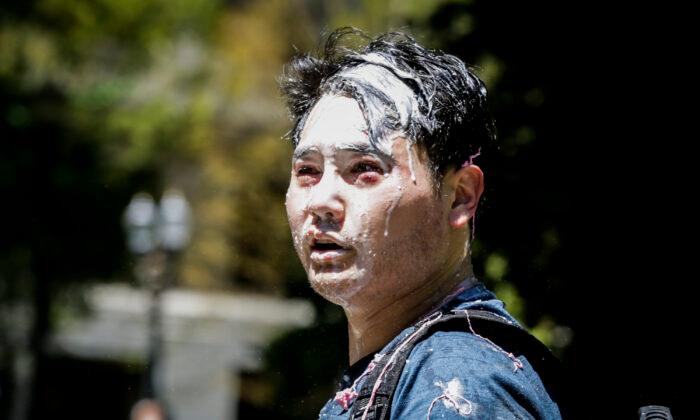A child has died after he fell about 15 feet from a rock climbing wall at a popular trampoline park in North Carolina.
A 12-year-old boy was climbing a rock wall at Altitude Trampoline Park in Gastonia on Wednesday evening, June 19, when he fell on the concrete, reported
Fox 46, citing police.
According to a 911 call made by a woman who said she was the child’s mother, the boy fell unconscious and was breathing abnormally.
Witnesses told
ABC News that before paramedics arrived the boy was not able to move and was barely breathing.
He was subsequently air-lifted to Levine Children’s Hospital in Charlotte for treatment where he later succumbed to his injuries on Thursday night, June 20, according to reports.
After the fall, officials at the park released a statement: “There was injury at our park involving a 12-year old child. We’ve been in touch with a representative from the family. We are getting updates on his condition periodically, and are not in a position to speak for the family. We are taking every step necessary at the park,” reported
WBTV.
The park was closed on June 21 “out of respect for the family,” according to a note posted on the door, reported
Charlotte Observer. The rock climbing area was closed for investigation following the fall.
Authorities told Fox 46 that they’re treating the fall as an accident and no criminal charges will be filed.
According to its
website, Altitude Trampoline Park’s equipment are manufactured in the United States with safety in mind.
“All Altitude Trampoline Parks are ASTM (American Society of Testing Materials) certified parks. ASTM creates the highest standards for safety in the industry–which sets us apart from many other parks in the industry,” the website states.
The boy was wearing a harness at the time of the accident. No other details about how the boy fell have been released.
Trampoline Parks
Over recent years, trampolining has been a popular choice of outdoor activity for many families–either in their backyards or at trampoline parks. But there are many dangers involved while enjoying the activity that could lead to serious injuries or death.Complaints about trampoline parks have been the subject of many lawsuits in the past few years. According to an investigation into lawsuits against a popular US trampoline park, Sky Zone, conducted by
Boston 25 News, most injuries arise from the jumper getting their feet stuck between the trampoline mat and the metal frame, or when larger children fall on smaller children.
Several attorneys told the news website that the injuries could be a result of design flaws in the equipment.
“The trampolines are inter-connected, and they are next to each other and these trampoline parks encourage people to jump from trampoline to trampoline and you can’t really count on kids and even adults to jump right on the center,” attorney David Chazen, who was representing seven people injured at Sky Zone, told the news website.
Gymnastic coach Don McPherson, who has been an expert witness for dozens of cases against trampoline parks, shared a similar opinion to
CBS News, saying that design flaws are to blame for the “catastrophic injuries.”
According to McPherson, since trampolines are all connected, when people jump the energy spreads in all directions, causing a “double bounce” that could end up in a collision between jumpers.
“They’re moving at speeds and with energy that when they hit or get hit by somebody else that’s twice their weight, they end up with crush injuries,” McPherson told the news website.
The American Academy of Pediatrics (AAP) had previously cautioned parents
against recreational trampoline use in 2012 due to the risk for significant injury. The warning was for home trampoline use but also applies to commercial jump parks, according to its statement.
“An AAP policy statement on trampoline safety recommends against children’s recreational trampoline use, but states that if they are used, safety measures should include constant adult supervision, adequate protective padding, one jumper per trampoline at time, and avoidance of flips/somersaults,” according to a
2016 AAP statement.




